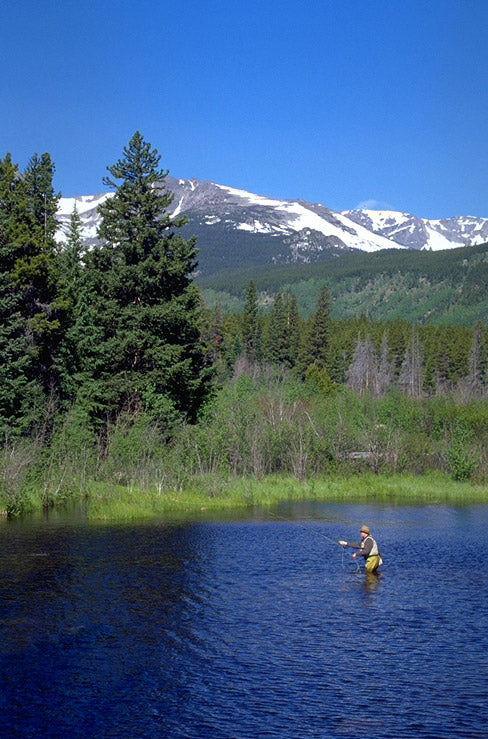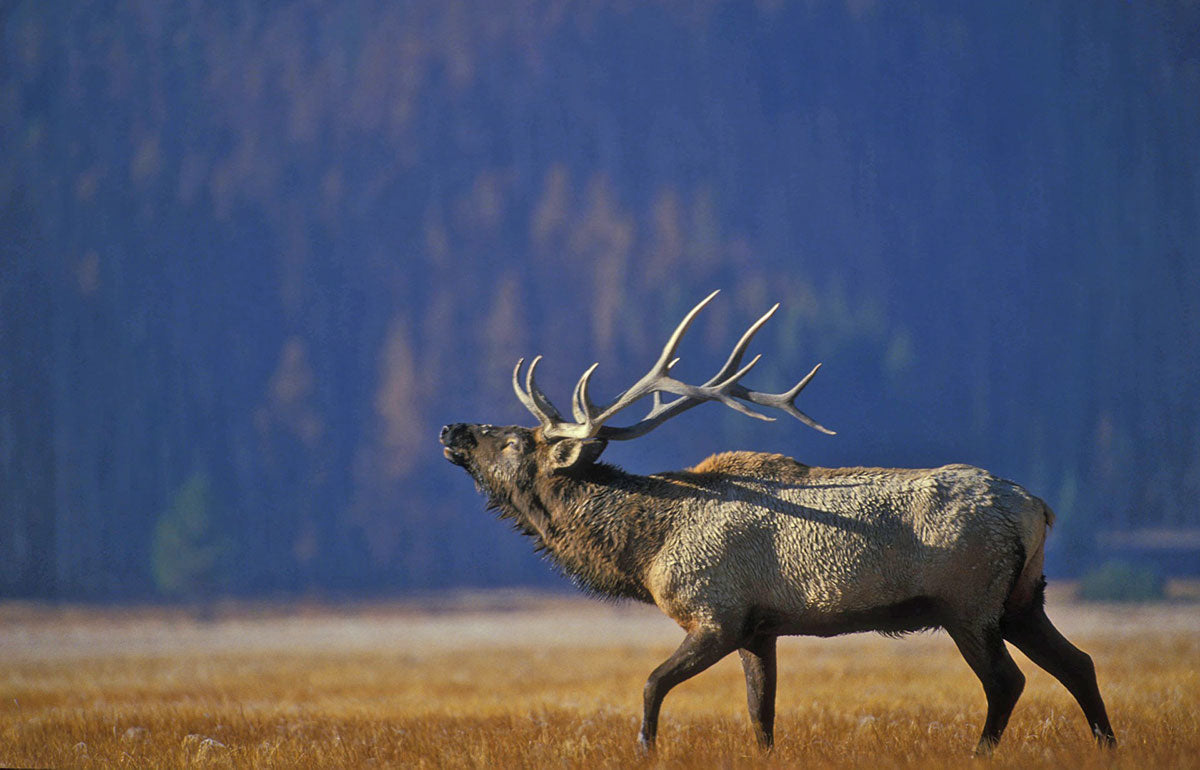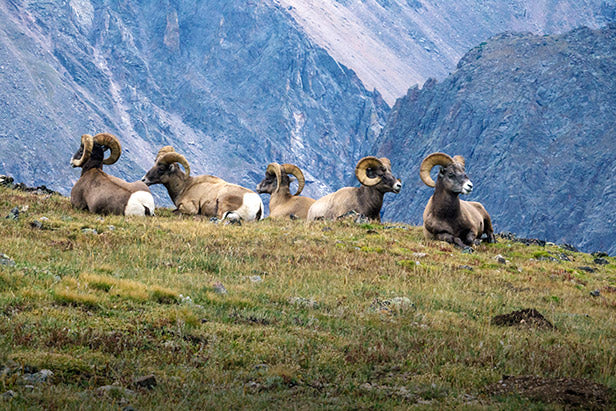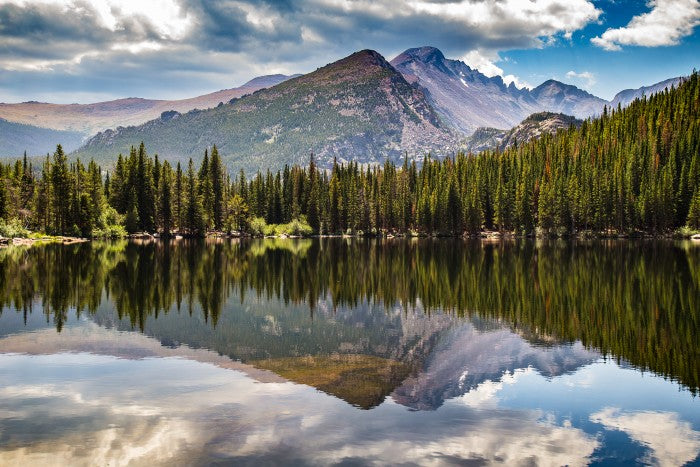
Best Things To Do In Rocky Mountain National Park
Robert DeckerRocky Mountain National Park’s 415 square miles encompass and protect some of the world’s most spectacular mountain environments. Trail Ridge Road – which crests at over 12,000 feet offers awe-inspiring overlooks to see these subalpine and alpine worlds. With more than 350 miles of hiking trails, and wildflowers, wildlife, and starry nights -- in a world of superlatives, Rocky is on top!
My name is Rob Decker and I’m a photographer and national park enthusiast. In fact, I’ve been to more than 53 of our amazing national parks. Rocky Mountain National Park is literally in my backyard, and I have explored almost every area of the park — so I’m ready to help! Whether this is your first time to Rocky Mountain, or if you are returning after many years and would like to be re-introduced to the park — this list of the best things to do is just for you!
Hiking

Rocky Mountain National Park has 355 miles of hiking trails. They range from flat lakeside strolls to steep mountain peak climbs. If you are new to the park, consult with rangers at the visitor centers. They can provide advice about trails which are appropriate to different fitness and experience levels. As you plan your hike, keep in mind that park elevations range from 7,500 to over 12,000 feet. Even very fit individuals coming from lower elevations may experience altitude problems. Symptoms include headaches, shortness of breath, insomnia and rapid heartbeat. To minimize symptoms drink plenty of fluids, avoid alcohol, don't skip meals and get plenty of rest.
Fishing

Sport fishing is permitted in Rocky Mountain National Park. Fishing activities are balanced with efforts to restore and perpetuate natural aquatic environments and life. Fishing was popular with early settlers and visitors in the Rocky Mountains. In an attempt to improve the sport, many streams and lakes were stocked with non-native species of trout. The National Park Service stocked non-native Yellowstone cutthroat trout as late as 1969. The only trout native to the park are the greenback cutthroat and the Colorado River cutthroat. These efforts to enhance recreational opportunities in National Park areas were reconsidered in the 1970s. Since 1975, native greenback cutthroat and Colorado River cutthroat trout are being restored to park waters and exotic or non-native fish are being removed.
Wildlife Viewing
Rocky Mountain National Park visitors have a passion for viewing wild animals, especially the big ones. With an elk herd numbering between 600 to 800 in the winter, about 350 bighorn sheep, numerous mule deer and a small population of moose calling the park home, it's no surprise that wildlife watching is rated the number-one activity by a vast majority of Rocky's three million annual visitors.

Wildlife Viewing Tips
The park's great large-animal population makes it one of the country's top wildlife watching destinations. Here are a few park favorites:- Elk can be seen anytime, a popular viewing period being the fall rut, or mating season. Look for elk in meadows and where meadow and forest meet.
- Bighorn sheep are commonly seen at Sheep Lakes from May through mid-August.
- Moose frequent willow thickets along the Colorado River in the Kawuneeche Valley on the park's west side.
- Otters were reintroduced into the Colorado River area and are doing fairly well. These animals are difficult to spot.
- Mule deer are common and can be seen anywhere. They are most often found at lower elevations in open areas.
- Bats feed over lakes and ponds at dawn and dusk.
- Marmots and pikas favor rocky areas. Marmots are best seen on the alpine tundra along Trail Ridge Road. Pikas - small, light-colored mammals - are common in rock piles. Listen for their sharp, distinctive bark and watch for movement.
- Clark's nutcrackers, Steller's jays, golden eagles and prairie falcons can be seen along Trail Ridge Road.
- White-tailed ptarmigans, some of the most sought-after birds in Rocky Mountain National Park, are common but difficult to spot. For best results, hike on the tundra and look carefully. Ptarmigans usually remain still, relying on their natural camouflage for protection.
- American dippers, or water ouzels, can be found along most streams. Listen for their loud call, similar to the rapid clicking of two stones together, as they fly up and down their territories.

Despite their good intentions, some wildlife watchers are loving park animals to death. Feeding junk food to wildlife reduces its ability to survive the long mountain winter. When they panhandle near roadsides, animals fall easy prey to automobiles. As they become habituated to humans and lose their natural fear, the animals become aggressive and may be destroyed. Harassing or feeding wildlife is illegal in all national parks.
Horseback Riding

Horses have been part of Rocky Mountain Park's tradition since its designation in 1915. Recreational pack animal use is balanced with other recreational uses such as hiking. Packing is managed to maintain the natural resources and unique ecosystems in the park. Horses, mules, ponies, llamas, and burros are allowed on park trails. No goats are allowed on park trails. For overnight camping, stock is permitted at established backcountry campsites designated for stock use. There are two stables located within the park: Glacier Creek Stables and Moraine Park Stables. There are many stables outside the park. Find contact information for the various stables in the area. There are two Estes Park stables open in the winter: Sombrero Stables and Aspen Lodge Stables. Approximately 260 miles of trails are open to commercial and private horse use, which makes up about 80% of the total trail network in the park.
Wilderness Camping
Rocky Mountain National Park offers some unique camping experiences and here are some things to consider when choosing your wilderness campsite. The first step in planning your trip: decide where you want to camp and for how long. I suggest purchasing a Rocky Mountain National Park topographic map to choose a destination and route. Then, use the Wilderness Campsite Map and Wilderness Designated Site Details to select wilderness campsites. Remember to consider the abilities of the least experienced member of your party and the distance and elevation gain from the trailhead to your destination.
Elevation
Rocky Mountain National Park is a high elevation park. If you live at sea level, it will take you several days to become acclimated. Most trails begin above 8,000 feet and climb abruptly higher. If you are not acclimated, you can get acute mountain sickness. Rangers recommend spending at least one night at 7,000–8,000 feet prior to setting out. This will allow your body to begin to adjust to the elevation.
Weather and Clothing
When you visit or call the park, discuss your plans with a ranger. Find out if snow has melted from the trails and destinations where you hope to hike. Check the weather forecast before starting your trip. Mountain weather changes very quickly. Within just a few hours, bright sunny skies may give way to raging storms. High winds often occur in the high country. Wind chill accelerates the lowering of body temperature which can result in hypothermia. Proper clothing is your first line of defense against cold. Plan to dress in layers so you can regulate your temperature by bundling up or peeling down. Be sure to pack rain and storm gear. Remember, you assume complete responsibility for your own safety and that of your group while hiking in Rocky Mountain National Park.
Ranger-Led Evening Programs
All evening programs are free and open to the public and are held at several locations throughout the park during evening hours. Both the Beaver Meadows Visitor Center and Kawuneeche Visitor Center are in non-fee areas of the park.
East Side Locations:
Beaver Meadows Visitor Center Auditorium (Hwy 36) is located approximately three miles west of the town of Estes Park. Evening programs are held mid- May through mid-June and intermittently throughout the year.
Aspenglen Campground Amphitheater is located at the Fall River Entrance (Hwy 34) approximately 4 miles from downtown Estes Park. Evening programs will resume mid-June, 2019.
Glacier Basin Campground Amphitheater is located along Bear Lake Road approximately 8 miles from downtown Estes Park.Evening programs will resume mid-June, 2019.
Moraine Park Campground Amphitheater is located along Bear Lake Road approximately 5 miles from downtown Estes Park. Evening programs will resume mid-June, 2019.
West Side Locations:
Kawuneeche Visitor Center Auditorium is located approximately one mile north of the town of Grand Lake (Hwy 34). Evening programs are held on Saturday nights throughout the summer. Please stop at a the visitor center for more information on specific topics.
Timber Creek Campground Amphitheater is located in the Kawuneeche Valley (Hwy 34) approximately eight miles from the Grand Lake Entrance. Evening programs are held throughout the summer and into September. Please stop at a the Kawuneeche visitor center for more information on specific topics.
Kids Activities

Kids are born naturalists. They access the natural world by asking questions, which sometimes come in bunches. Introducing children to the outdoors can begin at any time, but why not begin early? And why not start them out in Rocky Mountain National Park, one of the country's premier outdoor wonderlands. Infants can be carried in a front pack, which can be tucked inside the jacket if it's chilly. Hike anywhere. Your kids will be enthralled by the stunning scenery and the fresh mountain air, so enthralled that he or she will fall asleep in short order. When they reach the toddler stage, children begin to more actively interact with nature. It is a time of observation, of making initial connections and stockpiling notes. It is a wonderful time to introduce them to one of the many discovery trips found around the park. A few suggestions.
- Explore the edges of Bear Lake while enjoying the guidebook-guided trail tour that explains the area's natural and human history. Water holds an amazing variety of plant and animal life that will pique a child's curiosity.
- Discover Rocky Mountain's amazing array of wildlife. At particular times during the summer (ask a park ranger), the bighorn sheep come down to Sheep Lakes. Kids especially enjoy watching them cross the road after the lambs are born.
- Find a ponderosa pine forest and watch for Abert's squirrels. Their dark color and busy activities catch a toddler's eye for contrast and movement. Kids that are a bit older develop a more complex understanding of the world around them. While some children might enjoy expending energy hiking along a trail, most seem happiest thoroughly exploring a smaller area. On any hike with three to five year olds, it's a good idea to include a magnifying glass in the backpack. Textures of trees, plants, bugs and rocks are exciting close-up. In the early summer, enjoy the amazing floral colors found along the trail to Cub Lake.
- Have the youngsters keep an eye out for hummingbirds that may be visiting the flowers. Watch for beaver along the way in the Cub Creek drainage. Beaver dams are easy to spot in this area and stream banks are ideal places to look for animal tracks.
- The park has a "Rocky's Junior Ranger Program" for children in kindergarten through eighth grade. Emphasis is placed on park preservation, flora and fauna facts, and environmental education. When kids complete the Junior Ranger booklet, they earn a badge. Check at a visitor center for information.

These are but a few of the things you can do at Rocky Mountain National Park. Check with the park rangers when you arrive to see what activities are available, what wildlife might be easiest to see, or where the wildflowers are blooming. I've created three posters for Rocky Mountain National Park -- one that features a view of Moraine Park, one for Cub Lake, and one for the iconic Longs Peak.
Click here to see the Rocky Mountain National Park, Cub Lake poster.
Click here to see the Rocky Mountain National Park, Moraine Park poster.
Click here to see the Rocky Mountain National Park, Longs Peak poster.
Rob Decker is a photographer and graphic artist who had the rare privilege of studying under Ansel Adams in Yosemite National Park when he was just 19 years old. Now, Rob is on a journey to explore and photograph all 61 of America's National Parks. He's creating WPA-style posters to help people celebrate their own national park adventures -- as well as encourage others to get out and explore!
Join the growing community of 110k+ National Park enthusiasts to receive special offers, free giveaways and once-in-a-lifetime deals!



